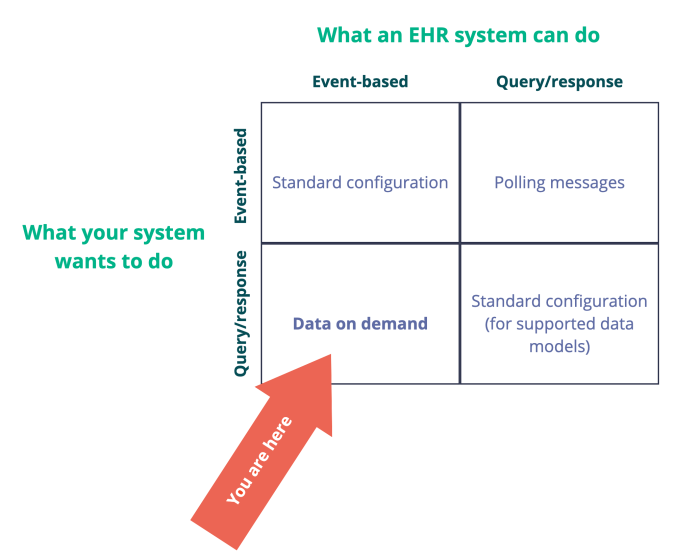Data on demand, a capability that allows you to request your connection's data “on demand” from Redox, offers:
- Multi-tenant, FHIR®-conformant data storage architecture with an automated scaling infrastructure. We scale your infrastructure based on your usage without charging incremental fees or requiring your team’s time.
- Customized business logic to ensure consistent data handling. We work with your connection to determine how they make their data available. We handle the scoping, setup, and testing to make sure you get the data you need when you need it.
- Pre-built queryable endpoints. We handle the integration to your connection and translate the output into the same Redox format every time. No need to do custom data mapping or create and maintain queryable endpoints.
- Industry-leading security practices. We combine industry certifications with technology best practices to drive our robust security program.
Data on demand is useful if your connection's system doesn't support synchronous queries, but they're willing to provide data asynchronously with a push-based method.
A push-based method may mean a high volume of incoming messages that you may not need until tomorrow (or even next month). But you still must build, implement, and maintain the necessary business logic to parse and store all the data.
We can already hear you saying: but wait, what if I don't want all that data?? Don't worry, that's why we offer data on demand.
With data on demand, the integrated system pushes data to Redox, which we ingest and organize for you. Then, you can query for specific data only when you need it. So you can focus on getting the data you want, when you want it, without the overhead in between.
- An integrated system only supports push (event-based) exchange;
- You don't want to store all the data that would come from a push-based exchange; or
- You only want to receive data when you need it (upon request).
Check out this diagram for the types of messages and data exchange you can do with data on demand:

So, when we set up data on demand for you, the EHR system's event-based messages look like queries on your end. Essentially, an EHR system's event-based message goes to a Redox data on demand instance, which you can query directly whenever you need to. Bonus: there's no difference in how you send a query to a data on demand instance versus to an EHR system directly. Mind-blowing, right?
Now that you're sold on data on demand, let's drill down into some specifics.
When you query data on demand, the returned results are based on exact matching. This means that all fields must match your search criteria exactly. Learn more about performing a patient search with data on demand.
If you use data on demand for patient admission, discharge, or transfer (ADT) data, you likely need a backfill of data before going live. Learn about backfilling.
No matter the backfilling option you use, your connection's system continues pushing patient ADT data to Redox after go-live. That way data is available to you via data on demand.
Per our data retention policy, Redox stores the protected health information (PHI) you exchange via data on demand for the duration of your contract. If you end your contract for any reason, data is purged within 30 days of your account closure.
Review our data retention policy for more details about how and why we store data.
You can also use data on demand for testing your workflows.